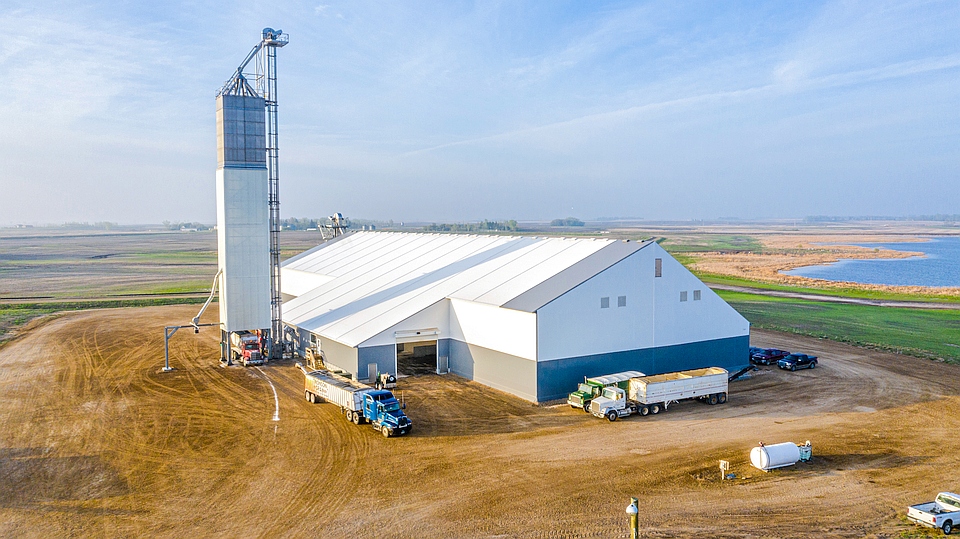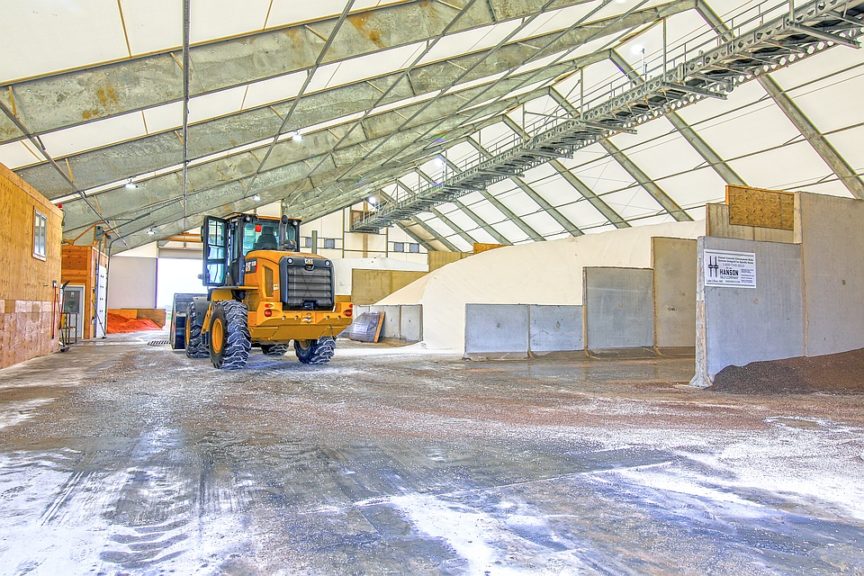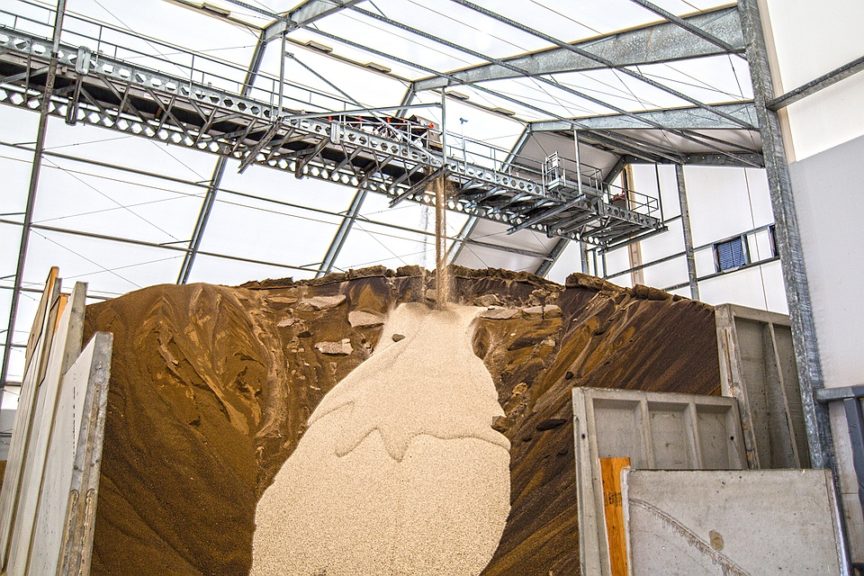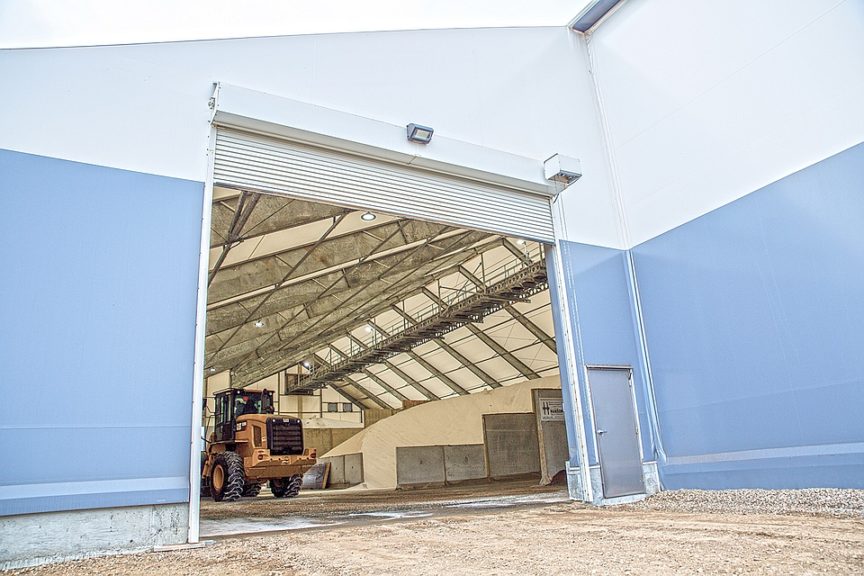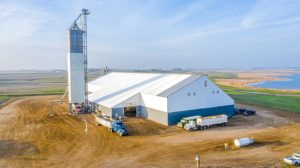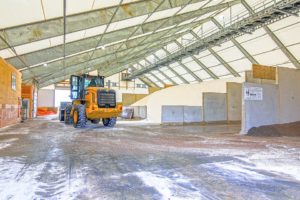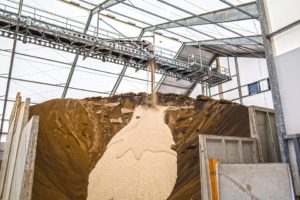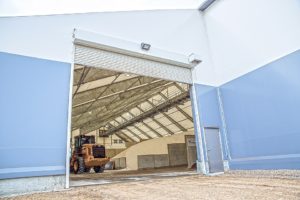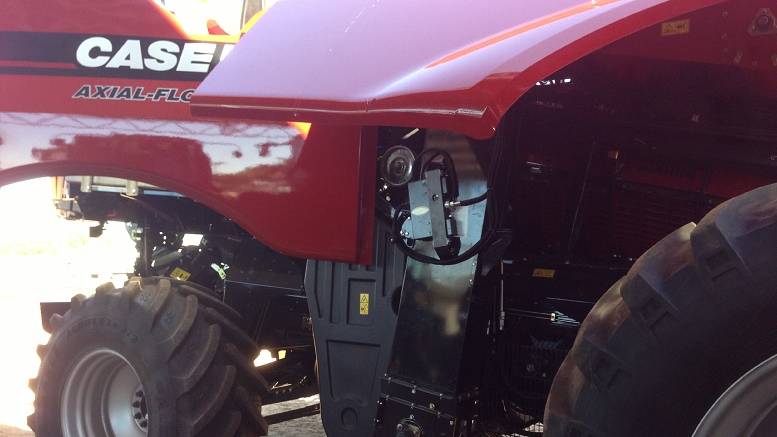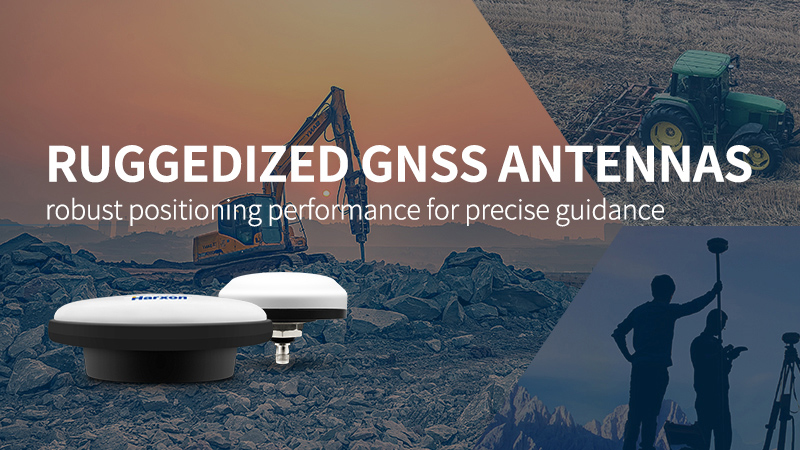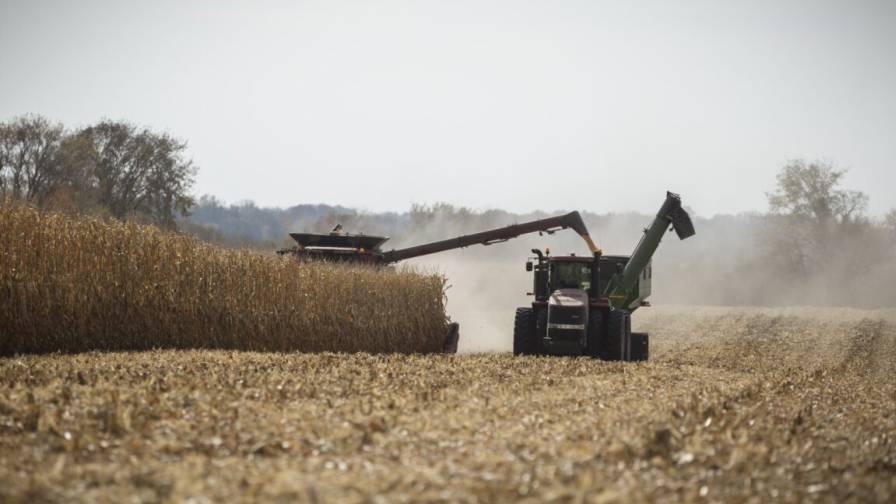Legacy Building Solutions
What We Designed
Legacy Building Solutions designs, manufactures, and installs fabric structures globally.
There’s a lot more going on at a fertilizer storage facility than meets the eye. Sure, there’s loading and unloading, but there is also mixing, blending, a tower with a control room and automated systems that make sure farmers get precisely what they need for their crops.
Legacy designed, manufactured, and constructed a fertilizer storage building for Tronson Grain up in Crary, ND. Patrick Tronson, assistant manager, describes the building as simple with a big footprint, but it’s anything but simple. The floor of the storage building is poured concrete with a pit in the middle. Then there are multiple storage bins separated by precast concrete walls. The attached tower is probably the most imposing feature. It’s a 150-ton capacity automated loading and mixing machine.
The pit in the floor feeds the tower and keeps it full. There are nine storage bins in the tower, taking up the top third of the structure. It automatically mixes the fertilizers and then gravity-loads it into the trucks. Each truck can have a different mix depending on what the farmer orders. It’s fertilizer loading, but there’s a lot of chemistry involved as well.
That’s how they unload. The building is loaded by both trucks and rail cars using a stainless-steel conveyor with a tripper to distribute the different fertilizers to the different bins. The conveyor system is supported by the roof beams and can load about 800 tons an hour. The whole building has 15,000 tons of capacity.
Legacy builds tension fabric structures with solid steel beams that are engineered to handle all kinds of loads. In this case, the beams were engineered to handle the conveyor system.
Tronson says, when presented with the option to do his facility in a fabric structure, he had some questions. Crary is a 2½-hour drive from Fargo, north and west. The weather out there can be rough in terms of wind and snow. Said Tronson, “That was probably our biggest concern. We’ve had heavy snows, heavy winds.” The first big test came in October of 2019 with an early North Dakota Blizzard.
Crary got hit with 28 inches of heavy wet snow and wind gusts up to 64 mph. Tronson’s building held up fine, and the pitch of the roof, he says, was particularly important as the snow started to pile up. The ExxoTec fabric we use for roof panels is quite slippery and snow tends to slide right off of it.
Because Legacy builds with solid steel frames, the interior spaces of our buildings are freespan, meaning central column supports aren’t necessary. From an unloading perspective, said Tronson, that’s helpful for the truck drivers. With other facilities he’s seen, support columns collect fertilizer around them and that makes operations less efficient. That’s particularly true when they bring up fertilizer from Texas because the climate change makes the material adhere to the columns.
Fertilizer facilities also house caustic chemicals that can corrode steel. Legacy helped to protect this facility by hot-dipped galvanizing all the steel components.
Tronson said his company had only one other fabric building, a hoop structure, but was impressed with what Legacy could deliver. “Legacy delivered more bang for the buck,” he says.
